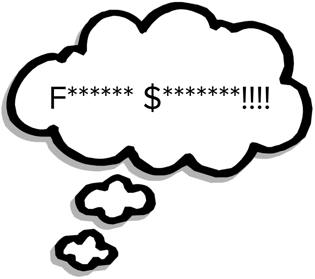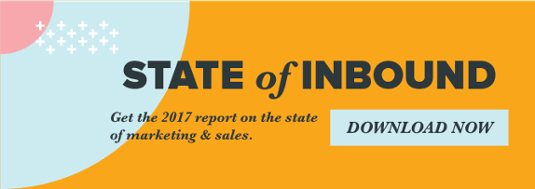If you asked me the most common reason why marketing fails, I’d say two things: 1) not knowing the customer well enough, and 2) failing to deliver on what the customer wants.
While these may sound obvious and simple, executing it well isn’t so easy.
To avoid this pitfall in your digital marketing, we recommend focusing on two important areas: your customer’s pain statements and the user intent. Here’s a guide on how to do both.
Pain Statements
What are pain statements?
Pain statements represent the discomfort, pain, or inadequacy (mental or physical) which motivate someone to enter the buying process. Pain statements are similar to pain points, except they are expressed as statements.

Why pain statements matter:
People purchase for one of two reasons: to reduce pain, or for gain. In most cases, it’s to reduce pain. This pain isn’t necessarily physical. It could be pain generated by not having the nicest car, having low energy, or not having the best body. It could be the frustration slow systems at work or not generating enough leads each month.
When a pain statement occurs, the solution isn’t necessarily clear - or even that there is a solution. All a prospective customer knows is that they’re unhappy. This is the very first step in the buyer’s journey. It’s also the first opportunity for a brand to make a relevant connection.
How to identify pain statements:
There are several methods for developing your top customer pain points, but the most effective is to interview your current customers. Ask questions like:
- When did you first realize something wasn’t right?
- What was the first thing you thought of?
- What was the first thing you did?
- What did you do online?
- What did you search?
- What did you see that was influential?
- What other options did you consider?
It is your job to understand the mindset and challenges of someone early in the buying process, then to turn those sentiments in pain statements.
Here’s an example. A speciality tea company is looking to grow its customer base. The tea market has seen remarkable growth in the US in recent years, but still struggles to compete with coffee’s popularity.
The health benefits of tea are not new, but recent research has strengthened the case for drinking tea. According to WebMD, studies have found some teas “may help with cancer, heart disease, and diabetes; encourage weight loss; lower cholesterol; and bring about mental alertness.” Those sound like great reasons to switch from coffee to tea, especially if health is on your mind.
As someone marketing tea, you could focus your attention on the moment a coffee drinker starts to feel unsatisfied. What thoughts do they have? What questions do they ask? What information do they search online? Here are a few examples:
- “Is coffee unhealthy?”
- “Natural method to help with heart disease.”
- “How to avoid a caffeine crash in the morning.”
- “Healthiest morning drinks with caffeine.”
When you understand the customer’s thought process, and the pain associated with it, you can create information that will strongly resonate.
Remember, these users are not necessarily shopping and ready to purchase. They are simply gathering information so they can better understand their problem. The earlier you can intercept them, the better chance you have at converting them.
User Intent
Once you’ve identified your persona’s pain points and begun driving traffic into your website, it’s time to start converting those customers into sales, leads, or followers. To do this, you must optimize for the user intent.
What is ‘user intent’?
User intent is the reason someone arrived at your website. They could be searching for a specific service, researching a product, trying to answer a question, or looking for immediate help. They could at the very beginning of the buying journey, or towards the very end. The website that does the best job of delivering on that intent will convert the most visitors.
Why user intent matters for converting customers
Getting visitors to convert on your website is a psychological challenge, not a design challenge. The highest converting websites in the world aren’t necessarily the prettiest. Instead, they are the ones that best align their content with the user's intent.
How to identify your user’s intent
User intent can be derived from several sources. Most of the time, it's inferred based on activity. In other words, the actions a visitor takes can tell us what their intent is.
Here are some ways you can better understand the intent of your users:
- keywords used in Google or Bing to find your website (paid keywords only)
- service or product pages visited on your website
- the specific links clicked from an email newsletter
- your site search tool (what they search once arriving on your site)
Let’s go back to the specialty tea company. A Google Adwords keyword report shows 10% of your traffic comes to your website searching for tea makers, but less than 1% of those visitors make a purchase. Fortunately, you sell tea makers - that's the good news. The bad news is these visitors are landing on your website’s homepage, not the tea makers page. They are then forced to find tea makers on their own by clicking through the menu.
In this example, the intent is clear (they want a tea maker), but their experience isn't aligned with that intent. While a few extra clicks may not seem like a big deal, it can be the difference between success and total failure. The user’s intent, and what we initially present to them, are too far apart.
Let's look at another example.
A regional staffing company actively blogs. Most of their posts discuss changes in their industry and new job postings, but their most popular post is on the cost of onboarding new employees. This single blog post, which wasn't given much thought at the beginning, now ranks at the top of Google and Bing for some highly searched keywords. This is bringing their blog a lot of traffic, but none of it is converting.
Why? Because they aren't optimizing for the user's intent. Their intent is to acquire some very specific data.
The blog post they found aligns perfectly with their intent, but the rest of the site talks about staffing. And while those are somewhat aligned, they aren't aligned enough.
The solution? Optimize for the user's intent by building out more content related to onboarding costs. eBook guides, reports, and onboarding calculators are easy ways to make a more meaningful connection with the user. Placing high value content behind a form is a simple way to capture their information in a database, which then can be used for lead nurturing.
The better aligned someone’s intent is with their actual experience, the more likely they are to convert. The more you understand the trigger that begins the buying journey (the pain point), the earlier you can make a connection.
These exercises are relatively simple, but take time, commitment, and discipline to execute effectively. If you can do these two things successfully, your marketing will become more focused and, most importantly, more effective.






Agree, disagree, or just have something to add?
Leave a comment below.